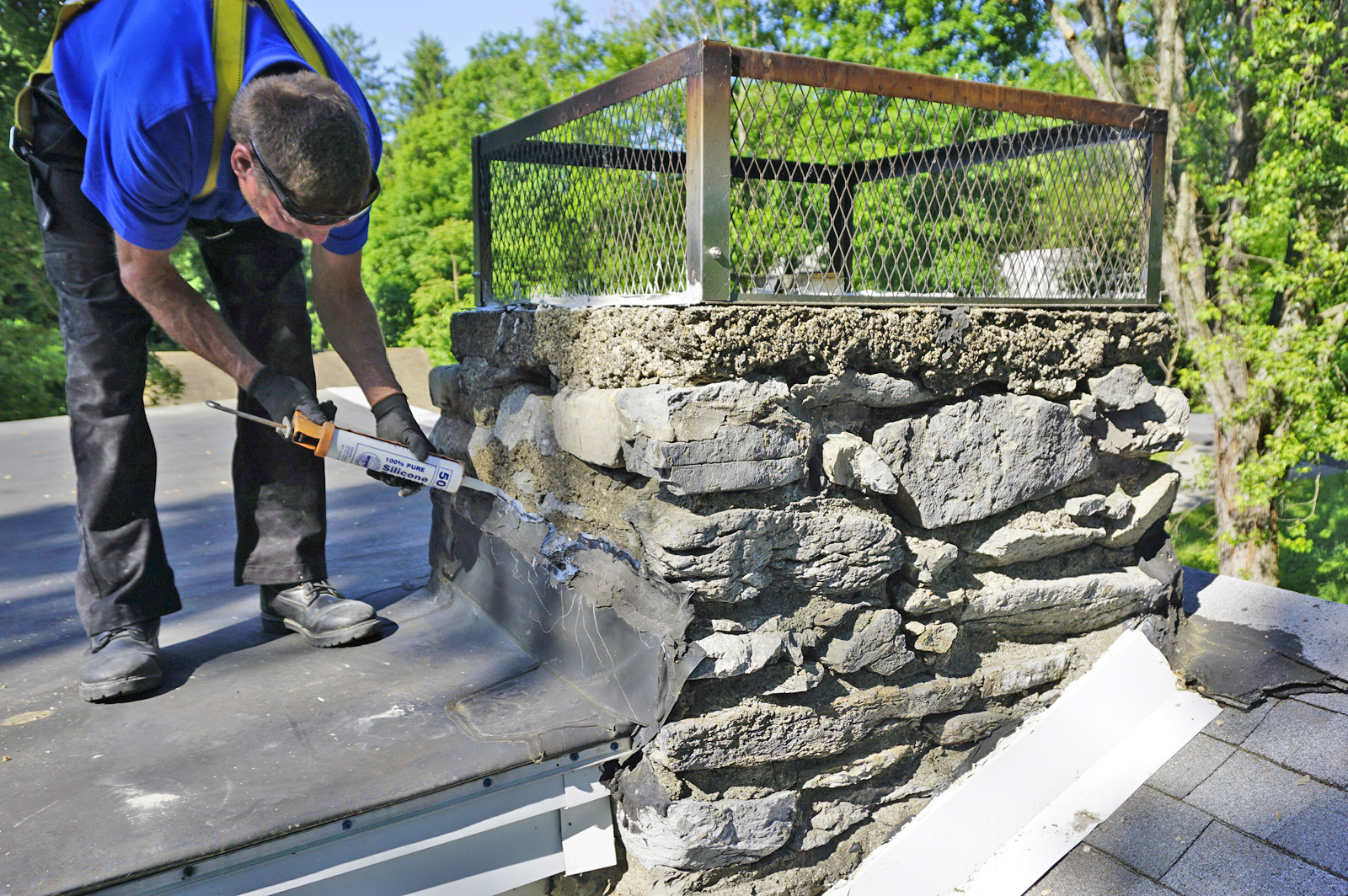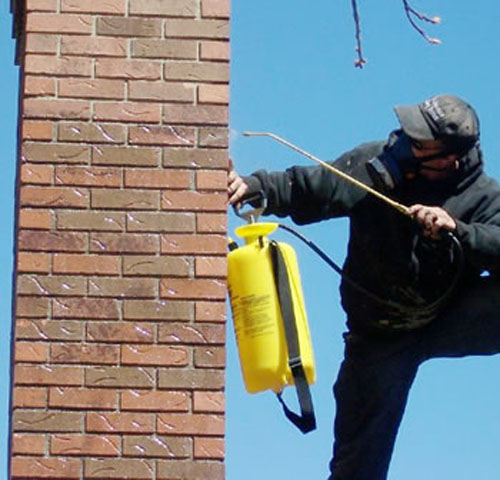Is Chimney Sealant a Good Idea?
The question of whether or not to use chimney sealants is a subject of debate, but most chimney experts seem to agree that it helps in the constant battle against moisture. Most masonry chimneys are built with bricks, which are porous and as prone to absorb moisture as a sponge. The design of chimney stacks helps to keep water away. When various components of the chimney begin to deteriorate, however, the masonry is even more vulnerable to damage.
 Why is Moisture Such a Problem?
Why is Moisture Such a Problem?
When excess moisture enters into a chimney structure, the complete deterioration of the bricks is set in motion. The only solution is to remove affected brickwork and rebuild that portion of the chimney. The reason for this has to do with winter weather. Every time there is a freeze and thaw cycle, water inside masonry expands and contracts. This creates movement in the brick, resulting in deterioration. Spalling occurs, which means that brick face breaks and pops off.
How Does Sealant Help?
Chimney sealant must be applied to masonry that has not already been infiltrated with moisture. Otherwise, a sealant treatment will only accelerate the deterioration process in the bricks because the moisture has more restricted movement.
It’s important to use the correct type of sealant to waterproof your chimney because bricks, by nature, need to “breathe.” Other sealants fill in bricks’ natural pores, which further traps water vapors.
“Vapor permeable” chimney sealants are the correct kind to use. These waterproofing products provide the brick exterior with a layer of protection from moisture while still allowing pores to “breathe.” The best option is 100% vapor-permeable sealant.
Application of Sealant
In addition to using the right chimney sealant, proper application is also crucial for success. Leave sealant application to experienced chimney sweep experts to prevent brick deterioration caused by moisture. Many experts claim that chimney sealant can provide protection against moisture for as long as 15 to 20 years.
 How Can I Tell if My Chimney Has Moisture Damage?
How Can I Tell if My Chimney Has Moisture Damage?
When considering the application of chimney sealant to help reduce your chimney repair costs, the first determination to be made is whether moisture damage has already occurred. Any existing damage must be fixed before applying sealant. It often requires an expert eye to spot water intrusion in a masonry system. There are a few obvious signs that moisture is in your brickwork, however, including the following:
- If there is white staining on your chimney, it is a sign of “effervescence.” This means that, in addition to water in your chimney system, there are also enough minerals containing salt that the evaporation of water vapor on the brick face leaves behind salt deposits. Although the stains do no harm, they are a clear indication that your bricks have been damaged by moisture. Masonry repair is needed.
- Cracks across the bricks on your chimney are evidence of deteriorating masonry likely caused by moisture.
- When piles of broken masonry can be seen around the chimney on the roof or on the ground below, you can be sure your chimney has spalling caused by moisture.
Contact the Experts at Northeastern Chimney Today
At Northeastern Chimney in West Hartford CT, we are the city’s only CSIA-certified chimney sweeps. Customer satisfaction has been the cornerstone of our success since we started out in 1984. Contact us for chimney sealant application, chimney cleaning, chimney inspections, masonry repair, and all of your chimney needs. Call 860-233-5770 today.


